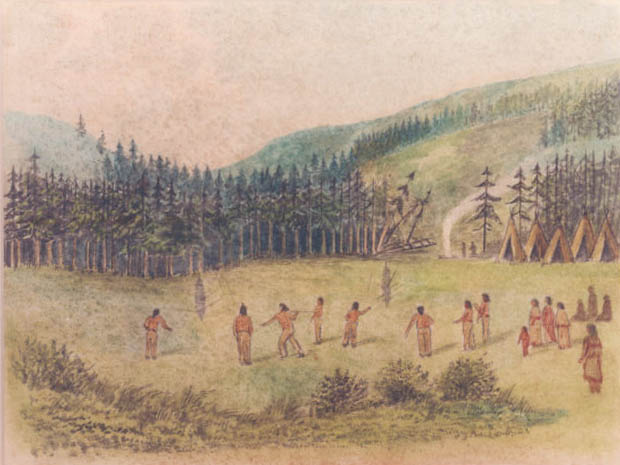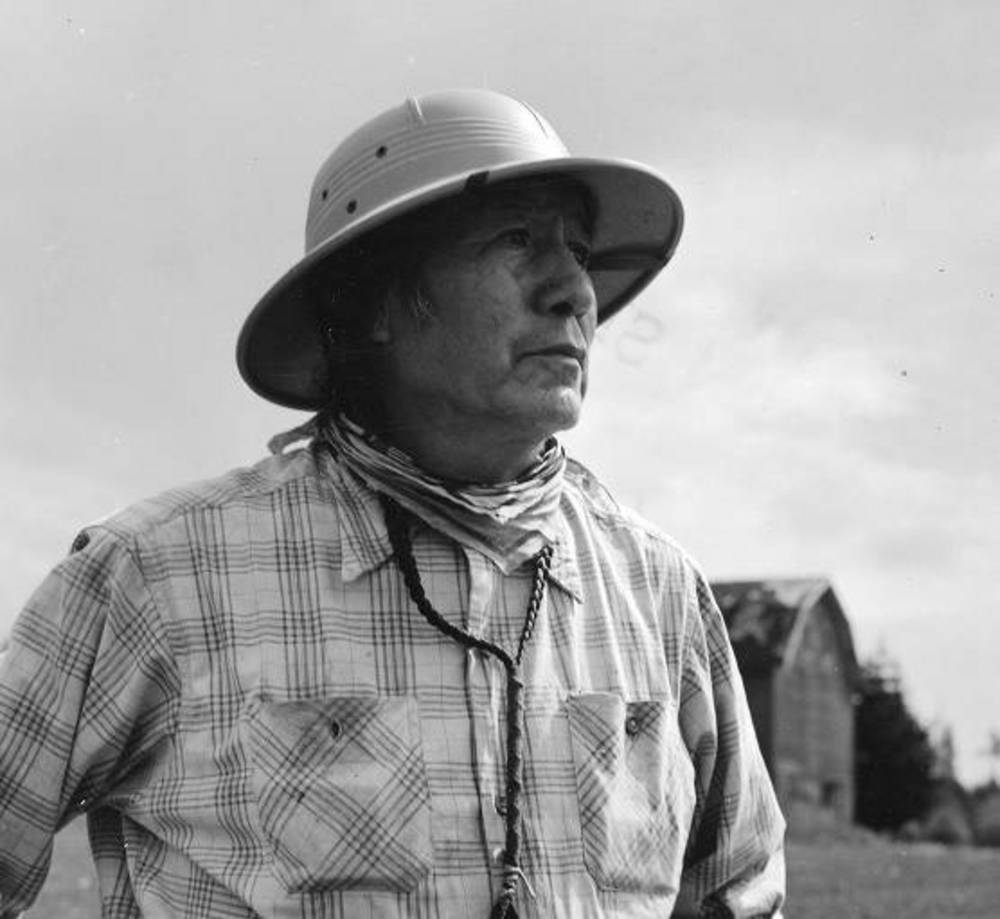The names Camassia, camas, qém’es, quamash, and pa-siko, all refer to the group of spring herbs whose white to blue-purple flowers form spectacular displays in wetlands, grasslands, and oak savannas in the Pacific Northwest. Camas is a North American plant whose greatest diversity lies in Oregon, which is home to over 65 percent of the named species.
From California to coastal British Columbia, indigenous peoples used camas bulbs extensively for food, along with salmon, acorns, and other foodstuff. The bulbs were valued as sweeteners, and shared or traded as gifts at weddings and funerals. Tribal families took care to pass down traditional harvesting sites across generations. During spring to late summer, women dug the bulbs with special sticks crafted of wood and animal antlers. Once harvested, the bulbs might be ground and stored in cake form. During special gatherings, families baked the bulbs in earthen "ovens" by layering them over hot stones with branches of native shrubs, herbs, and trees, then cooking the bulbs until tender and sweet. Tribes actively traded camas, including the Kalapuyans of the Willamette Valley and the Nez Perce who, in 1805, shared their bulbs with members of the Lewis and Clark Expedition, rescuing the party from near starvation. Although the explorers suffered gastrointestinal misery from eating camas, Meriwether Lewis returned the following spring to observe first hand the prolific blooms that “resemble lakes of fine clear water." He also collected the scientific specimen, called a holotype, that today is associated with the first-discovered, and most common species of western camas, Camassia quamash.
In Oregon and adjoining states, camas plants vary greatly in form and ecology, with ten different subspecies and four species growing at elevations from sea level to 3,300 meters. Camas produces flowers from April to June, in a climate that ranges from Mount Hebo on the North Coast to the remote reaches of the Hell’s Canyon overlook (e.g., Cusick’s camas) in eastern Oregon. While the rare Howell’s camas is endemic to southwestern Oregon and occurs on unusual, serpentine-derived soils, the Willamette Valley harbors the two most common species: C. leichtlinii and C. quamash. C. leichtlinii, or great camas, is the largest of the two and has a distribution largely restricted to the west side of the Cascade mountains. In contrast, C. quamash extends from the Oregon coast to as far northeast as Montana. Recent molecular and morphological studies indicate that both species are genetically distinct despite some hybridization. All species are ecologically important for their abundance and for the nutrition they provide to diverse animals, like the camas pocket gopher (Thomomys bulbivorus).
Today, camas “lilies” are still important culturally and ecologically, and three of the four Oregon species are available as garden cultivars. In Oregon, Washington, and British Columbia, camas is used in programs to reintroduce native species for wetland and prairie restorations. Each year in Oregon, indigenous communities celebrate the camas harvest to commemorate its role in their cultural history. The presence of camas on many Native American reservations also attests to its importance during difficult transition times in our history. Protecting and conserving existing camas populations is increasingly critical since oak savannahs and wetlands are rapidly being converted for agriculture, housing, and commercial development.
-
![Camas (Camassia quamash (Pursh) Greene).]()
Camas (camasia quamash), 2.
Camas (Camassia quamash (Pursh) Greene). Photo by William & Wilma Follette USDA-NRCS PLANTS Database / USDA NRCS, 1992, Western Wetland Flora: Field Office Guide to Plant Species, West Region, Sacramento, CA
-
![(Photo by William and Wilma Follette USDA-NRCS PLANTS Database]()
Camas (camasia quamash)/Camas (Camassia quamash (Pursh) Greene)./Camas (Camassia quamash (Pursh) Greene)..
(Photo by William and Wilma Follette USDA-NRCS PLANTS Database USDA NRCS, 1992, Western Wetland Flora: Field Office Guide to Plant Species, West Region, Sacramento, CA)
Related Entries
-
![Big Summit Prairie]()
Big Summit Prairie
Located in the heart of the Ochoco Mountains, Big Summit Prairie is kno…
-
![Confederated Tribes of Grand Ronde (essay)]()
Confederated Tribes of Grand Ronde (essay)
The Confederated Tribes of Grand Ronde Community of Oregon is a confede…
-
![Indian Use of Fire in Early Oregon]()
Indian Use of Fire in Early Oregon
Anthropogenic (human-caused) fire was a major component of the Native s…
-
![Native American Agricultural Labor]()
Native American Agricultural Labor
As early as the 1830s, when French Canadians associated with the Hudson…
-
![Western Oregon Klikatats (Klickitats)]()
Western Oregon Klikatats (Klickitats)
Between the 1810s and 1850s, a sizable segment of the Klikatat Tribe of…
Related Historical Records
Further Reading
Kozloff, E. Plants of Western Oregon, Washington, and British Columbia. Portland: Timber Press, 2005.
Sultany, M., S. Kephart, and P. Eilers. “Blue flower of tribal legend: Skye blue petals resemble lakes of fine, clear water.” Kalmiopsis 14 (2007): 28-35.







